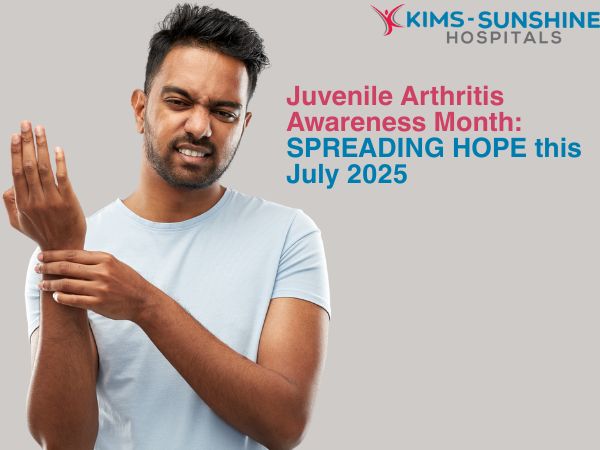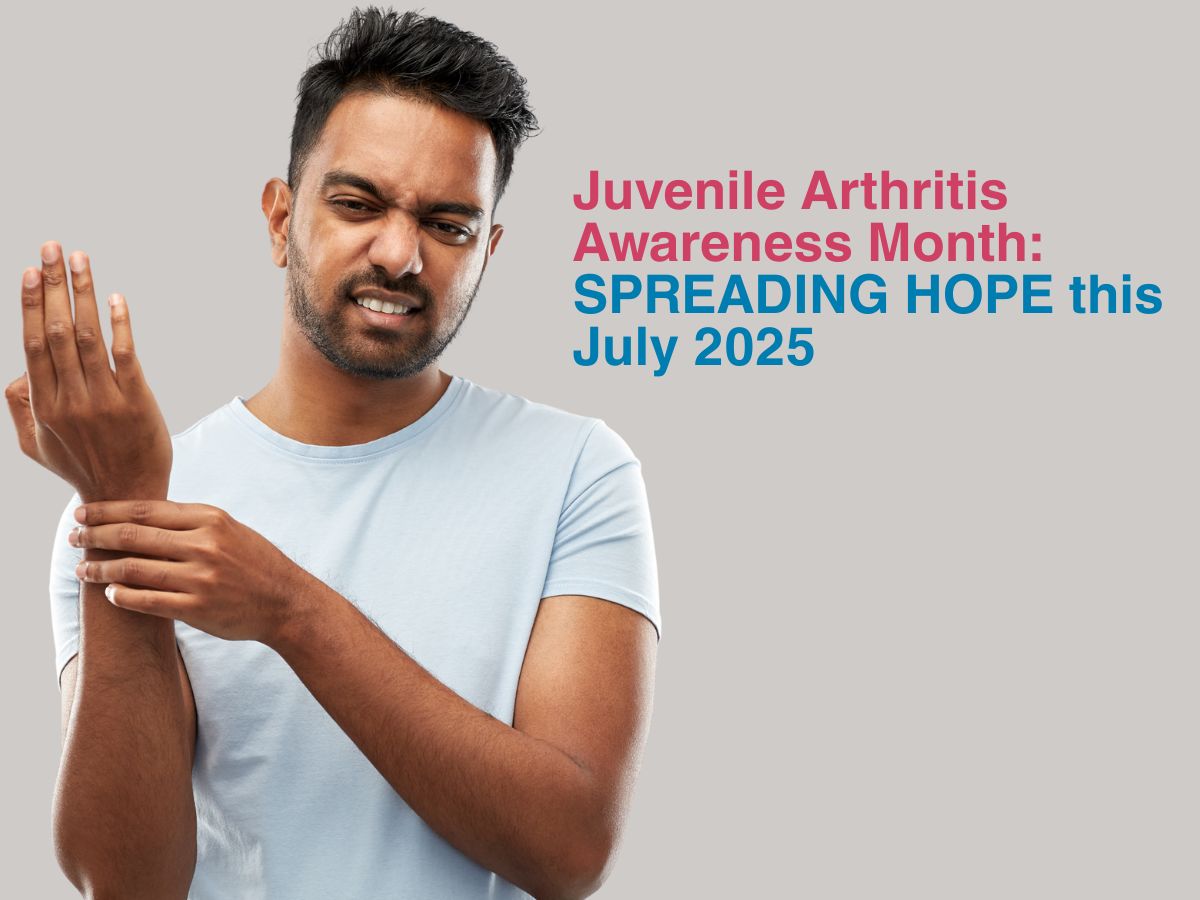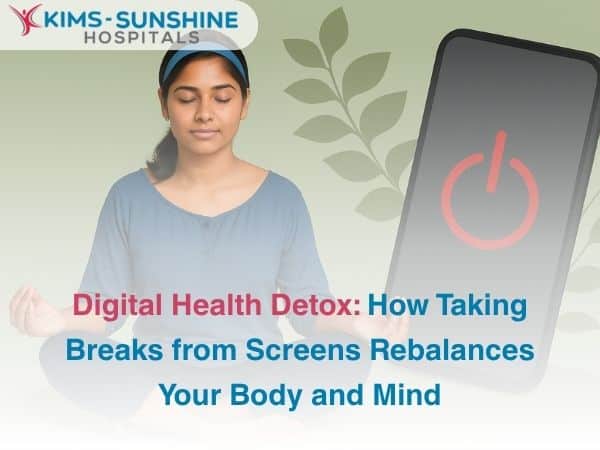
Juvenile Arthritis Awareness Month: SPREADING HOPE this July 2025
Introduction- What Is Juvenile Arthritis And How Is It Treated?
Known in medical terms as Juvenile Idiopathic Arthritis (JIA), this is not just one illness but a basket of autoimmune conditions. In JIA, the immune system attacks healthy joint tissue, leading to pain, stiffness and swelling.
- NSAIDs act like fire extinguishers, calming the immediate inflammation.
- DMARDs like methotrexate are the quiet negotiators, persuading the immune system to back down.
- Biologics are the precision snipers – targeted, powerful and often used when older strategies don’t hold the fort.
- Physiotherapy becomes daily scaffolding, keeping the structure upright while everything heals beneath.
- Nutrition steps in as silent reinforcement, turning each meal into a miniature medicine cabinet.
Symptoms Of Juvenile Arthritis In Children
JIA doesn’t come with a drumroll. It arrives softly like fog over a field. You don’t always notice it until the shapes start to blur. Common symptoms include:
- Stiffness, especially in the morning.
- Swollen joints, without a bruise or injury in sight.
- Unexplained limping, often passed off as laziness or tiredness.
- Persistent low-grade fever, which seems to arrive uninvited and never fully leave.
- Irritability or withdrawal, not from mood swings, but from a body that quietly resists movement.
- Eye issues, including light sensitivity or redness, are seen in some forms of JIA.
In India, where every child is expected to “toughen up” and keep pace, these signs are often brushed under the carpet.
Difference Between Adult And Juvenile Arthritis
If arthritis in adults is an old house groaning under its own weight, then juvenile arthritis is a new building where the wires have been wrongly laid. Both are serious. But they demand different toolkits. Adult arthritis is often caused by time, wear and lifestyle. Juvenile arthritis is not a result of aging or overuse. It’s a misfiring immune system mistaking the body’s own joints for intruders.
Adults usually say, “It hurts here.” Children rarely know how to name pain. They speak through behaviour: avoiding swings, skipping meals, frowning through a pencil grip. There’s also a more invisible difference. In adults, arthritis may slow things down. In children, it can alter the blueprint. What begins in the joints can echo through school, sleep and poor self-esteem.
How To Support A Child With Juvenile Arthritis
- Set Routines That Breathe – Children with JIA don’t need rigid schedules. They need rhythm. A gentle flow of medicine, meals, movement and rest. Make routines that can stretch or shrink depending on the day.
- Translate The Pain Into Words – Help them find language for what they feel. Teach them to describe aches not just as “bad” but as “tight,” “hot,” or “slow.” Pain is less scary when it has a name.
- Make The Home A Soft Landing – Keep things within reach. Use warm packs for stiff joints. Choose clothes with easy fastenings. Let them rest without guilt and play without limits when energy returns.
- Team Up With The Teachers – Call the school. Explain the condition. Ask for flexible seating, access to lifts and understanding during exams. School should never be a battlefield for a child who is already fighting quietly.
- Speak Openly, Share Calmly – Don’t wrap the diagnosis in silence. Be honest. Be hopeful.
Conclusion
There’s a quiet kind of strength found only in children who have learned to walk through pain. Not the dramatic kind. Not loud or obvious. In India, where the myth of the ever-active child still rules our expectations, this month invites us to slow down. To notice the child who sits out. To listen when a complaint comes twice and to ask a second or third question when the first answer sounds too rehearsed. Because what children with JIA need most is not just medical care. They need space. They need voices that believe them. Eyes that see the tiredness behind their smiles and hands that help them through mornings that don’t start easily. Let July be the month we shift the story. Let it be the month we build ramps where there were steps before.
Frequently Asked Questions
. How is juvenile arthritis different from adult arthritis?
What are the early signs of juvenile arthritis in children?
Is juvenile arthritis a lifelong condition?
How is juvenile arthritis diagnosed and treated?
Can children with juvenile arthritis live normal lives?







